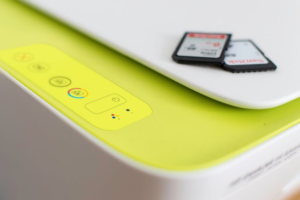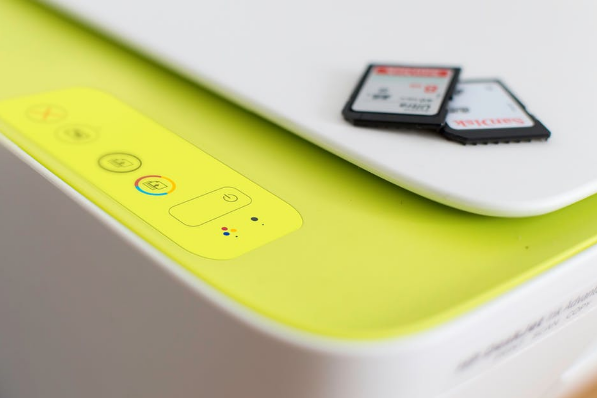By Jerry Mooney
Anyone with a modicum of engineering or technological savvy knows that the world is changing rapidly. Jobs come and go quicker than ever before. And the digital age is threatening everything we know about manufacturing. But that doesn’t mean someone with a great idea won’t stand a chance in business. On the contrary, it seems more and more tech startups are finding ways to thrive.
There is a much greater need for experienced and creative engineers to develop high tech equipment than ever before. Consumers want the future in their homes now. Sure, it might all be hooked up to the internet, but it works within the domestic setting. They’re after short-cuts, conveniences, and entertainment. A way out of the boring tasks and chores that steal time from the family would be very appealing to any parent. So what have you got in mind?
Building 3D Printers
3D printing has rapidly become more popular and more accessible. The technology has moved rapidly to facilitate this, but there is still much to be done to place one in every home. You could build it! The future of this technology is not set in stone. But the uses for it are quite extensive. Replicating popular items in plastic may seem like a waste of time until you realize that these items can be used. They can work mechanically or be fitted with other components. There is no end to the options here.

To build 3D printers, you need just a handful of standard components. Usually, you can find most of the requirements like hybrid stepper motors and drivers under one roof. Pick a supplier you can work with long-term to find the solutions you need. You’ll need a workspace to assemble your equipment. Of course, as a startup, you might prefer to use a manufacturer with a factory line setup to take care of this.
Wherever your strengths lie, you will need to take care of the marketing strategy. As more and more 3D printers come on the market, you will need to find a unique selling point that attracts a good market share. Your entire venture might be run by you from the comfort of your home laptop. That doesn’t mean you should shirk deeper involvement. Find out what you can and develop the concept further. Startups are nimble, agile, and creative with the freedom to manipulate their product ideas quickly and easily.
Smarter, Quieter, More Economical
There is a trend toward the green product at the moment. In fact, this has become a global phenomenon. Developing high-tech products that demand less power and emit less pollution is a key objective for most businesses. It should certainly be on your mind if you’re venturing into high-tech manufacturing. How can you create products that meet this ethos? Consider the obvious – transport. Electric cars are going to flood the market shortly, and they will be priced to match other vehicle types. Where can a startup get a foot in?

Other electric vehicles are also enjoying a revival. Electric bicycles, in particular, are now available throughout the country. Prices are still excessive for many fairweather cyclists, but that doesn’t stop you developing tech to bring that cost down.
As electric cars become the norm, other features are going to be developed. Think about car safety. There have been a few stories in the press about exploding phone batteries. Chances are customers will worry about their car battery. Then, of course, is the ongoing need to charge them. Just like the bicycle, there will be only a limited distance available per charge. Can you develop a vehicle, battery, or charger that overcomes this problem?
Why The Startup Has The Advantage
As discussed earlier, startups are nimble and agile. But what really gives you the advantage as a small enterprise is the fact the big businesses are so big. That means there is a long chain of command and a long period of time to get everyone to sign off. They’ll plod along at a snail’s pace while you can get things moving at your pace. Nobody is in your way so you can make greater progress. And nobody is going to say no to you!

Startups can also apply for funding from any source they choose. Big businesses are either not eligible for funds, or have to go through their extensive budget approval processes. It’s no wonder the most exciting innovations and ideas come from the little companies. There is nothing to stifle your creativity!
Get Started
As you can see, there are various product ideas out there. Perhaps your business will develop something entirely different. Maybe all you have right now is an idea? Getting started from nothing might seem like you’re starting from a disadvantage. However, it means you can tailor your business to suit your product rather than manipulating a setup to fit. Here’s how to get going:
Product Development
If it’s high-tech, you’re going to need high-quality components. Gone are the days when consumers would be happy to tinker with settings or open up a device to brush off the dust! Now, if it doesn’t work, it gets sent back to you, complete with a barrage of bad reviews across social media. Start as you mean to go on. Source the items you need, and hire experienced workers to assemble your products.

Test! Always thoroughly test your products and check they fulfill every requirement a consumer might have. You should also develop packaging that is attractive and functional. Finally, develop a manual that is clear and easy to use.
Premises
The premises you use will need to be secure and safe. When it comes to manufacturing, you can’t cut corners. Provide appropriate safety wear, offer the training necessary, and supervise the floor. Be wary of moving into a space that leaves you no room to grow. Equally, don’t push your budget beyond the orders you know are secured.
People
As a small startup, you might not be able to pick and choose the most talented employees. That doesn’t mean they won’t be attracted to your project. Use people you know well and people that have the experience your company needs to get off the ground. You can engage consultants and specialist companies to tackle the parts of the business you don’t have time for.
Promote
Promoting your new product is much easier than you think. For a start, there are more technology blogs and news sites than ever before. Get to know some of the writers and journalists. Be prepared to give away your products for reviews. Influencers are very important for any new product launch.
Make sure your PR skills are top notch. Launch your product with a bang! Make sure your website is full of useful and interesting articles that discuss the uses for your product, the build quality, and a full how-to guide. Photos and videos help customers gain trust in your brand and product. They help the customer to understand how to use the product and how it could change their life for the better.
Product Variations
No product stays in the limelight for long. Nor does it stay current or novel. Your product will have to undergo a few changes over the years to offer more and more to the customer. Don’t forget, those big companies will catch up eventually and ride the hype wave off the back of their big brand. Keep a step ahead with new features, and product variations that solve different problems. Are you ready to venture?



Recent Comments